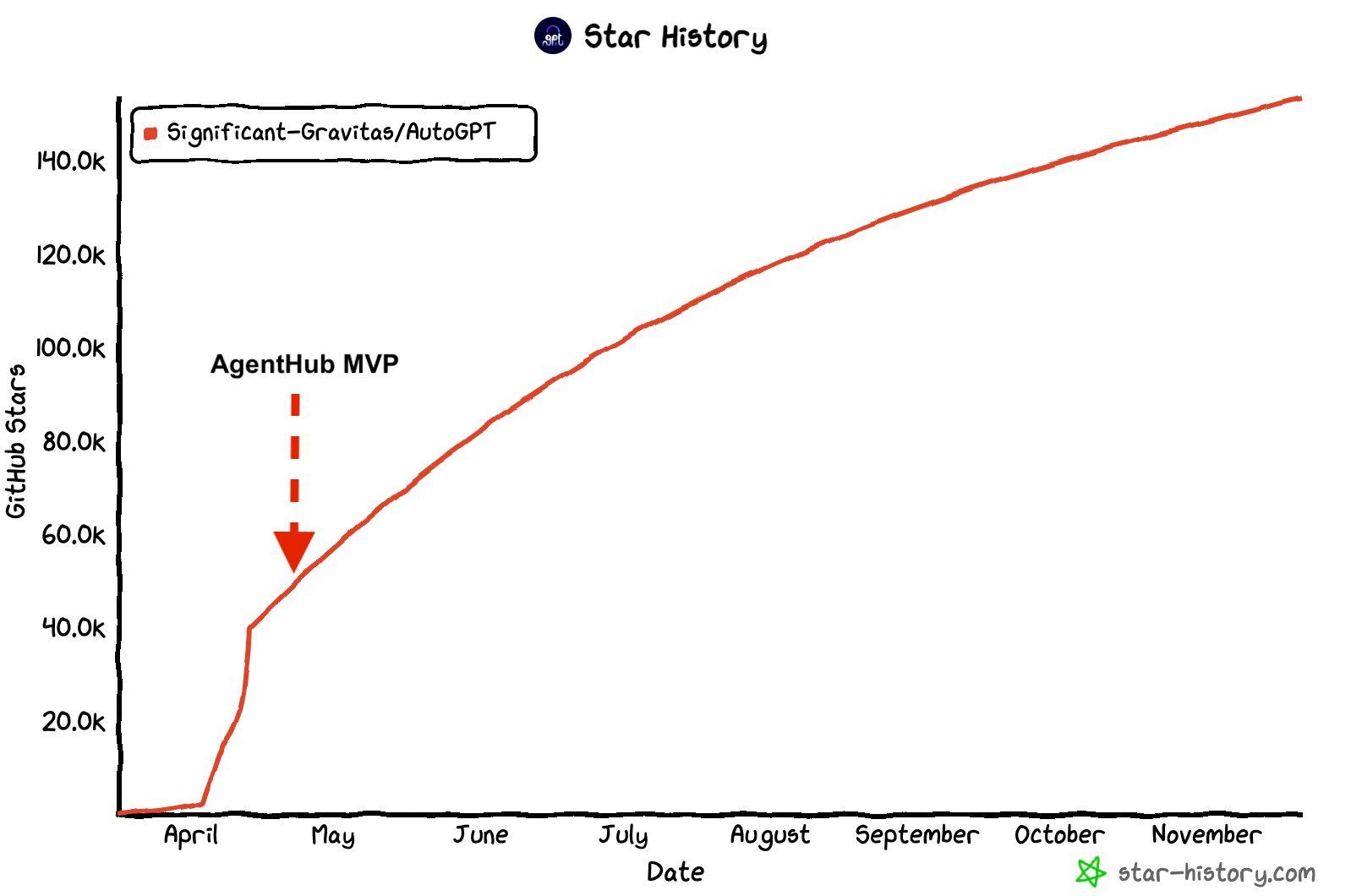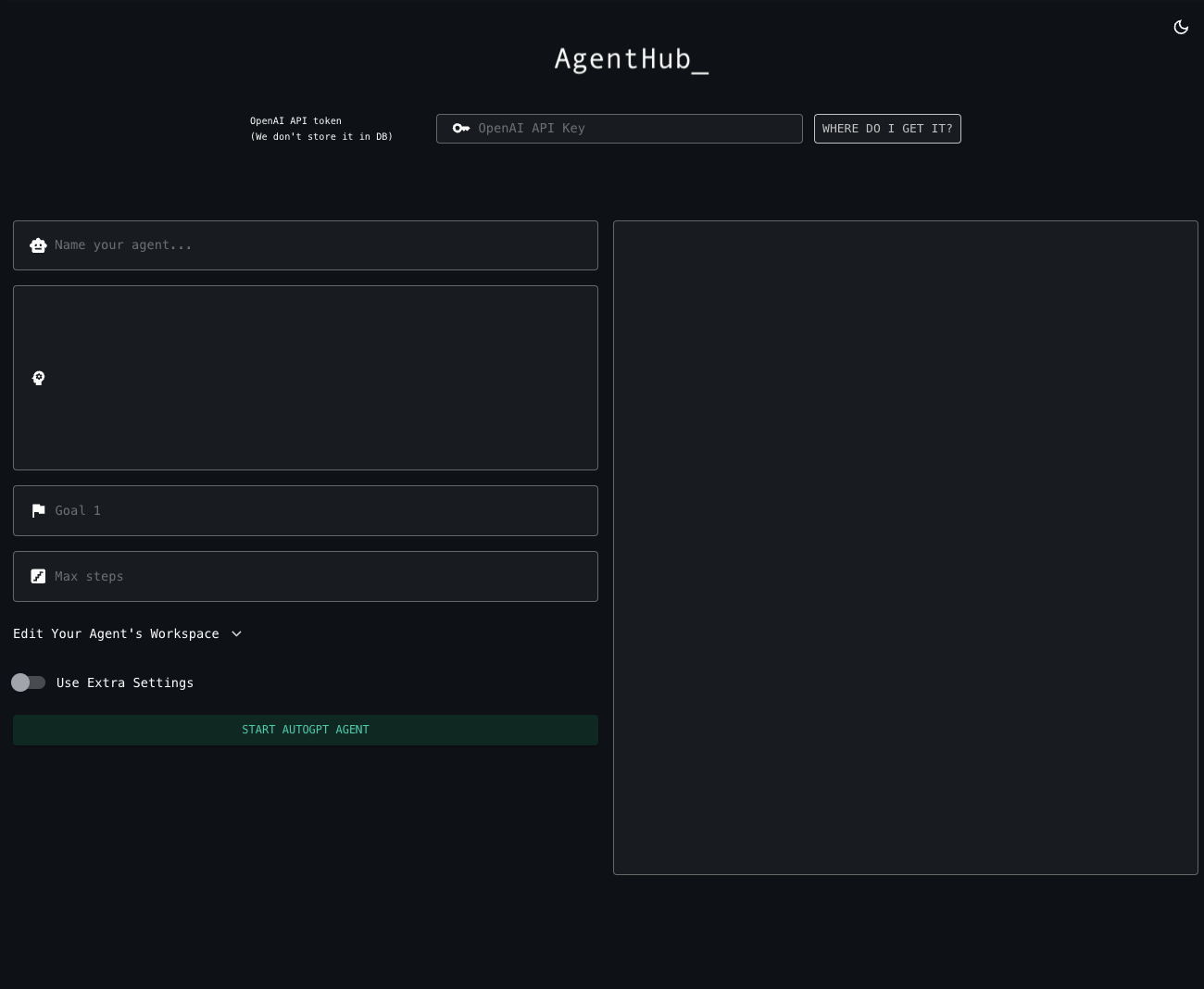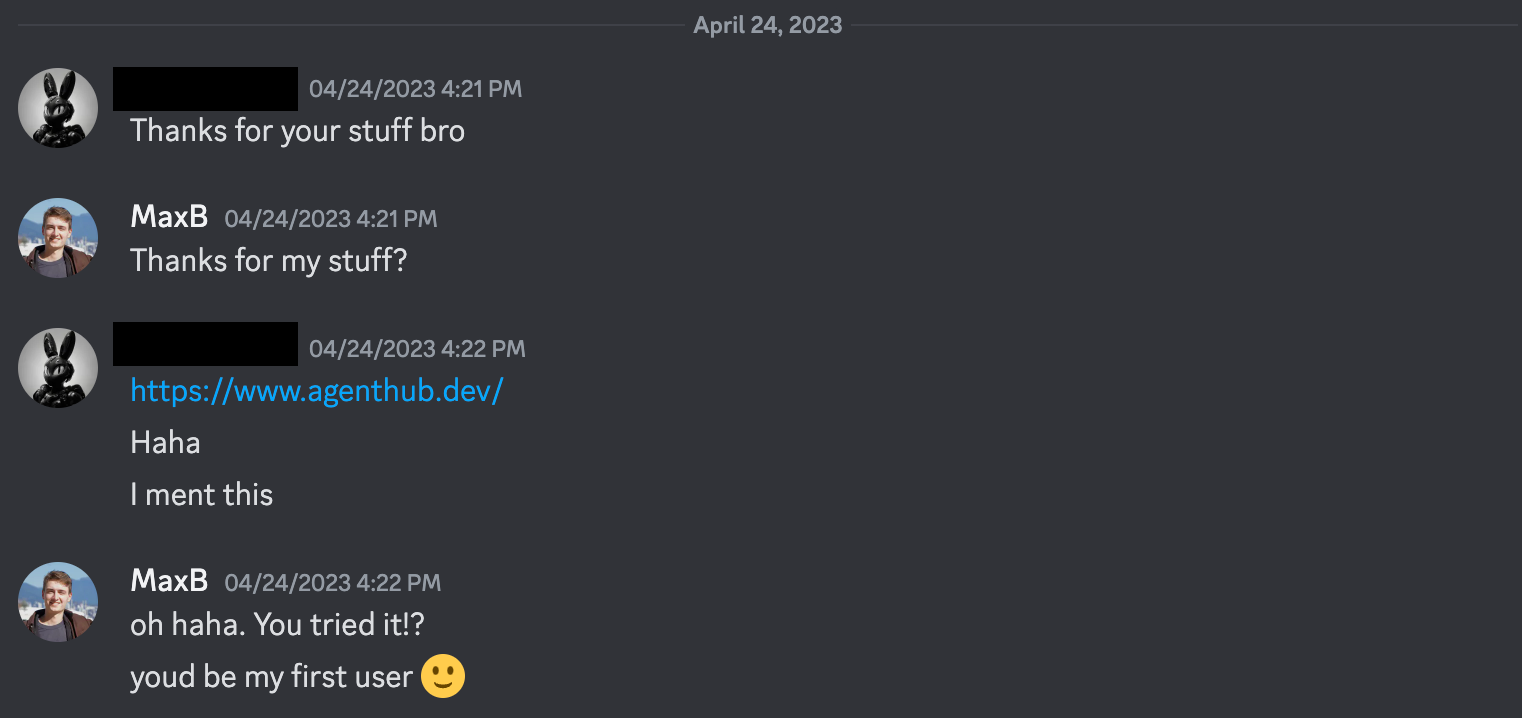I'm not sure what Gumloop looks like at the time you're reading this, but it's the result of hundreds of micro-pivots and iterative improvements. It all started by trying to address the pain-points of a small group of users in a discord server.
AutoGPT Discovery
In late April of 2023 I discovered AutoGPT on Reddit. AutoGPT was one of the first open-source autonomous agent frameworks that gained mainstream popularity. The simplest way to describe an autonomous agent is 'ChatGPT on loop'. A user can define an open ended goal like 'solve world hunger' and the LLM will prompt itself to devise an multi-step plan. It will then start trying to execute the plan one step at a time while adding more steps. I'd recommend checking out AutoGPT if you're interested, they are really building something special.
I setup AutoGPT locally and tried it out for the first time. I asked it to plan my girlfriend's trip to Italy, gave it her preferences and let it start running in hopes of getting a detailed itinerary.
It spat out a pretty generic and poorly researched list of things to do and attractions to visit. I still thought it was going to change the world.
Our MVP
We started spending some time in the AutoGPT discord. It was one of the fastest growing open source communities ever so that discord server was booming. The idea of fully autonomous agents was so exciting that it even drew in non-technical people to try out open source code in a discord server. AutoGPT's meteoric rise was pretty special to watch.

We noticed two problems after spending some time in the community:
-
Many of the new discord joinees couldn't set it up on their local machine. The support channel was flooded with requests for help. They didn't know how to use git/github, how to install dependencies or how to use their command line.
-
Once you got AutoGPT up and running, there was no way to actually share your agent. There was no hub ;) where you could put your cleverly constructed prompts for someone else to try out.
We decided to address this problem by hosting the latest release of the repo in the cloud and building a simple UI for it to replace the command line interface.
This was my first time using React, but I watched a bunch of youtube videos and made something usable (it was bad). We launched 3 days later.

I would go into the AutoGPT discord and send people a Gumloop link when they were struggling to set things up. There were many bugs, people were hesitant to paste in their OpenAI tokens and it didn't work on mobile, but it still addressed a problem.
I had so much fun building it that I never looked back at the trust and safety project and started thinking bigger.

Our Key Insight
After a few days of shipping improvements and chatting with people on discord we started getting messages claiming Gumloop was failing to deliver. Every time we would look into an issue we would realize it was simply that AutoGPT failed to perform the task. They were blaming Gumloop, but didn't make the connection that we're not affiliated with AutoGPT and we are not impacting how the Agent performed.
This is not to discredit AutoGPT. It was extremely new and experimental, but the staggering level of hype around it convinced people that AGI had been achieved.
This continued for a few weeks. We tried to improve the platform, added features like file support, history, vector DB selection etc. However, users slowly stopped coming back because they were getting burned by the unreliability and cost of autonomous agents. They would ask for extremely niche tasks to be completed without realizing what they were asking for was absolutely impossible. Having used agents a fair amount by then, I would be able to tell immediately when a prompt had any chance of success. 95% of the time it had none.
We realized that these users had very specific workflows they wanted completed, but leaving it completely up to AI was not only unreliable, it was extremely expensive. They would be paying $12 USD for the Agent to spin it's wheels performing the same Google search over and over again.
If users ever wanted to use AI for business purposes it really has to have no margin for error. We started thinking of ways we could make sure the AI was only involved when absolutely necessary in order to squeeze real value out of each AI request.
We needed to make AI automation reliable and affordable
We came up with a new approach of letting users define a step-by-step pipeline. It started off with a simple step-by-step drop down menu and slowly evolved from there.
Gumloop Now
It's been fun to write this post and look back on how things started. I'm glossing over 10 blog posts worth of details here, but this was the high-level starting point. Gumloop has now become much more versatile and complex, but still has the same underlying goal of making AI automation reliable and cost-effective.
We're super excited for the future of the platform and are building quite literally as fast as we can to improve the product daily.

